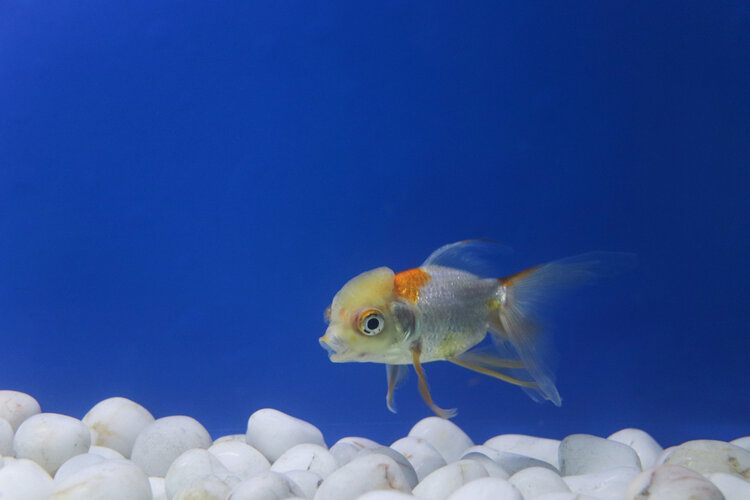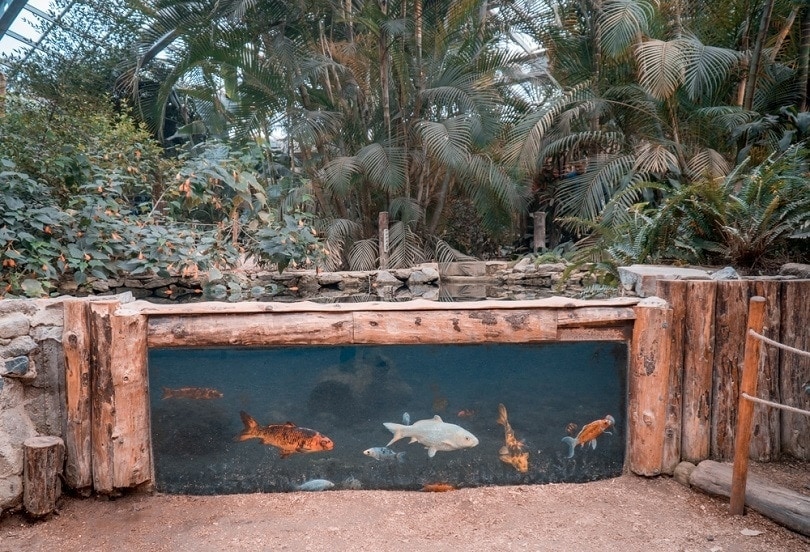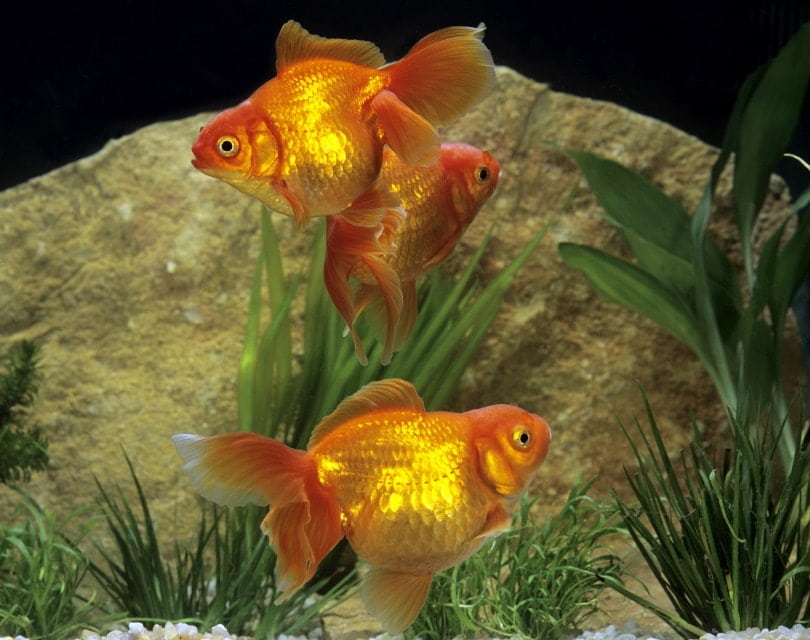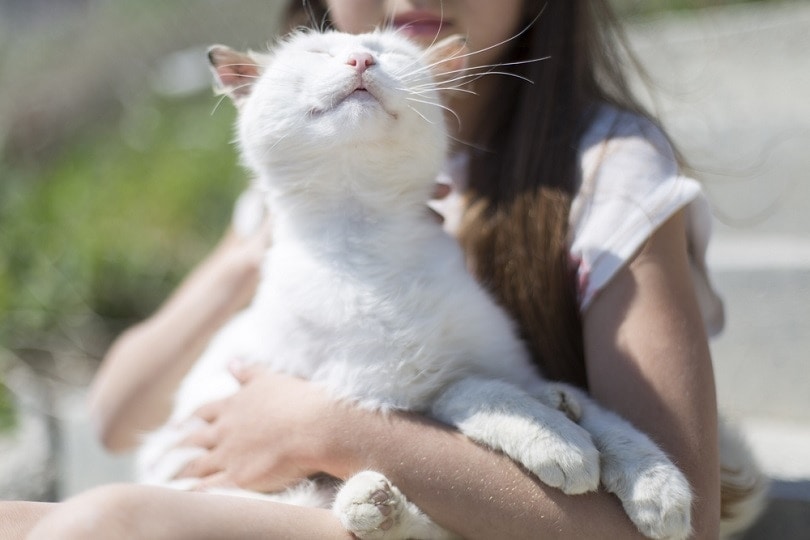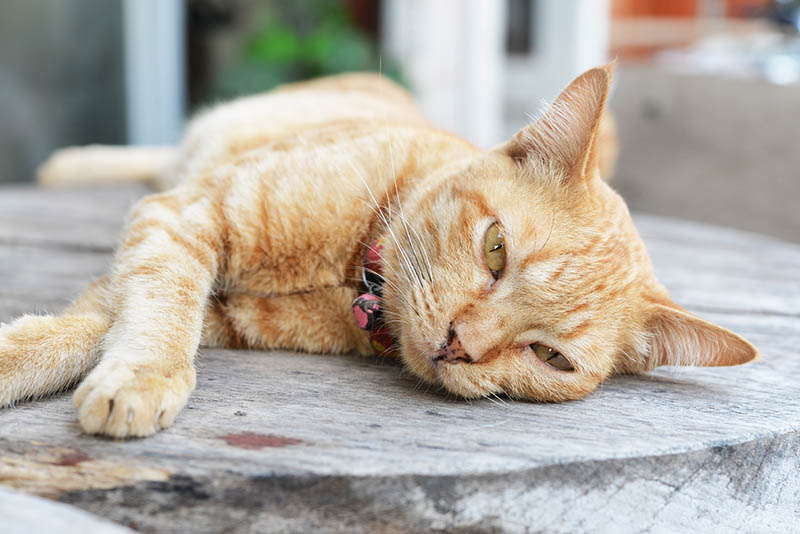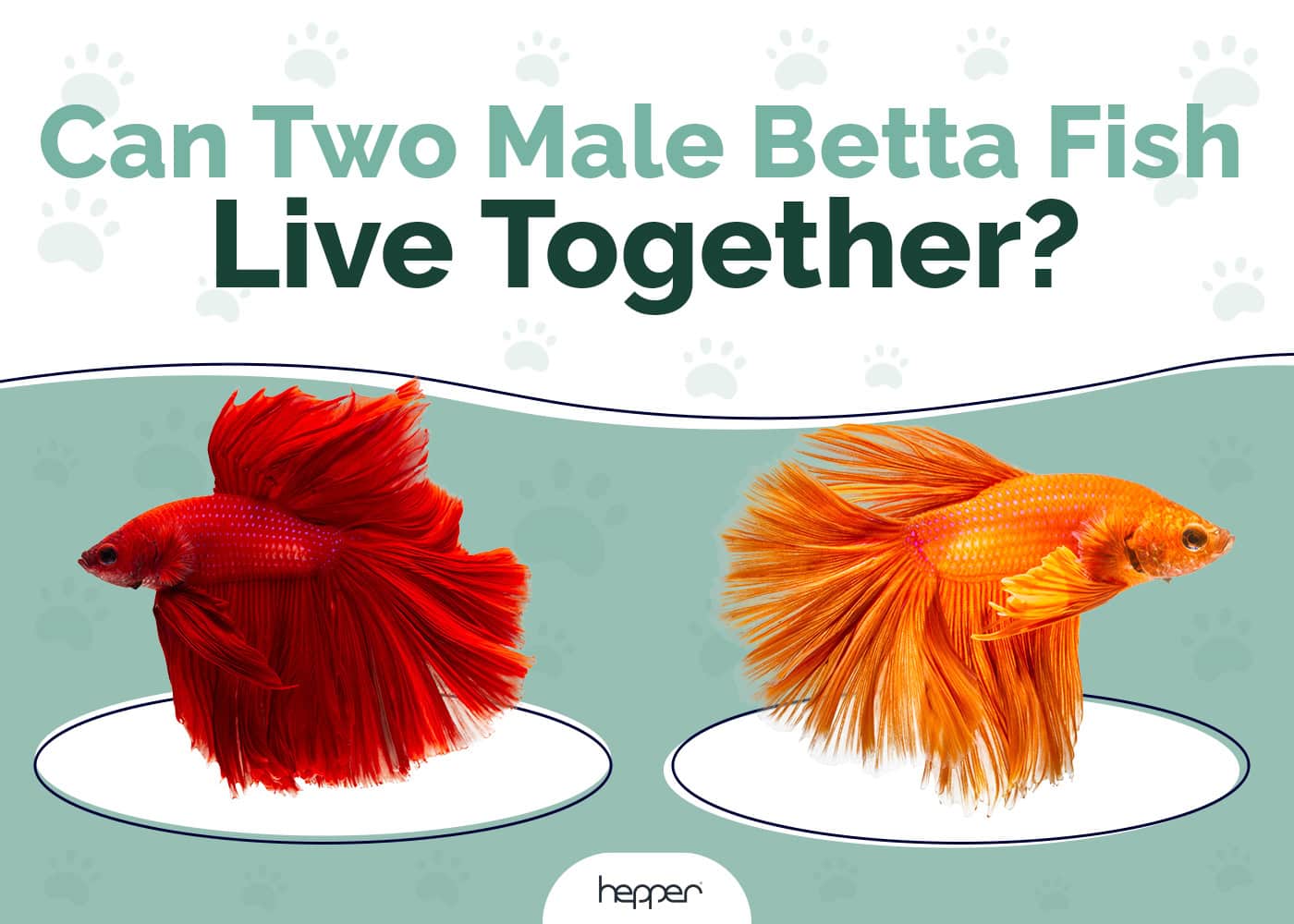Eggfish Goldfish: Pictures, Size, Care, Tank Setup & More
Updated on
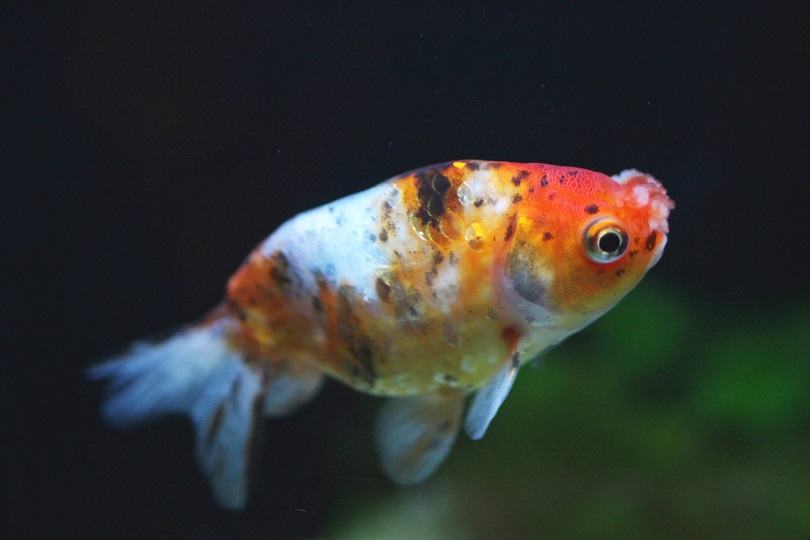
Goldfish may seem like a boring fish that you’ve seen too many times, but the goldfish actually comes in a wide range of interesting varieties. One of those interesting and unique varieties of goldfish is the Eggfish goldfish. If you’re on the hunt for a fun and different variety of goldfish to take home, check out the Eggfish and see if you fall for this cute, egg-shaped fish!
| Size: | 4–7 inches |
| Lifespan: | 8–15 years |
| Similar Breeds: | Ranchu goldfish, Lionhead goldfish |
| Suitable for: | Moderately experienced fishkeepers |
| Temperament: | Social, peaceful, curious |
The Eggfish is likely a goldfish variety that you aren’t familiar with if you live in the West. These fish are not usually seen outside of China and Japan. If you’re interested in fancy goldfish varieties, like the Lionhead, Bubble Eye, Celestial, and Pompom, then you’ll love the Eggfish. The Eggfish goldfish is the precursor variety that helped form these other goldfish varieties. In fact, this goldfish is documented as far back as 800 years! Although cute and unique, the Eggfish isn’t a great fit for just anyone, if you’re even able to get your hands on one.
Eggfish Goldfish Breed Characteristics
How Much Do Eggfish Goldfish Cost?
Since Eggfish are uncommon goldfish, you can expect to spend more than you might on another fancy goldfish breed, but you may be able to find one for as little as $20–$30. You may end up spending over $100 for a high-quality Eggfish goldfish, though. If you have trouble finding an Eggfish in stores near you, then you can order one from a breeder, but you will likely pay a higher price for the fish itself, as well as paying for shipping to get the fish to you quickly.
Other expenses associated with the Eggfish include setting up an appropriate tank environment. If you’re starting from scratch, then you can expect to spend at least $50 on the supplies and food needed for your new fish.
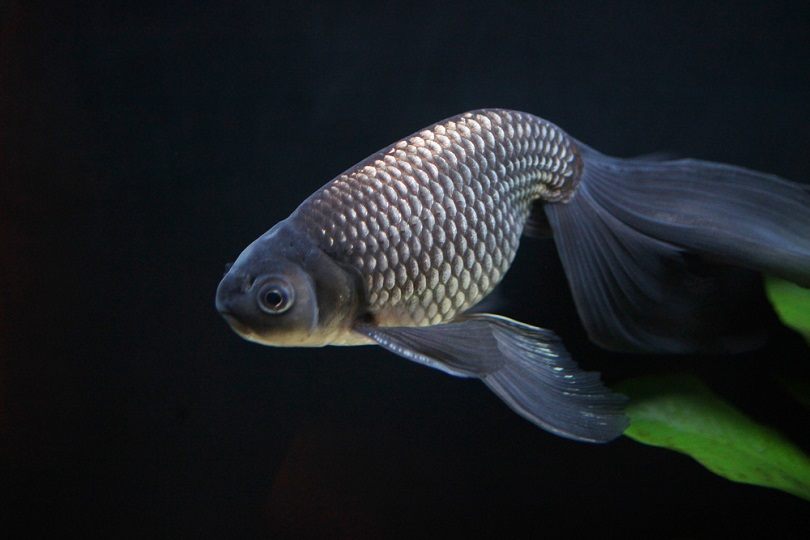
Sociability of the Eggfish
Do These Fish Make Good Pets?
Like most goldfish breeds, the Eggfish makes a fantastic pet. These fish are social and fun, and it’s not uncommon for them to get excited when they see the person or people who feed them. They can even be taught how to perform tricks, although they may struggle more than some other varieties of goldfish might because of their body shape and slow movements.
Does This Fish Make a Good Tankmate?
Yes, the Eggfish makes a great tankmate. They are friendly fish that seem to prefer living with a friend. Other fancy goldfish varieties are suitable tankmates, but other options are limited. The Eggfish moves slowly and slightly uncoordinatedly due to the body shape and lack of dorsal fin. This means that faster tankmates can outcompete the Eggfish for food. Slim-bodied goldfish, like Comets, and other cool water fish, like White Cloud Mountain minnows, are likely going to eat food before your Eggfish can get its fill.
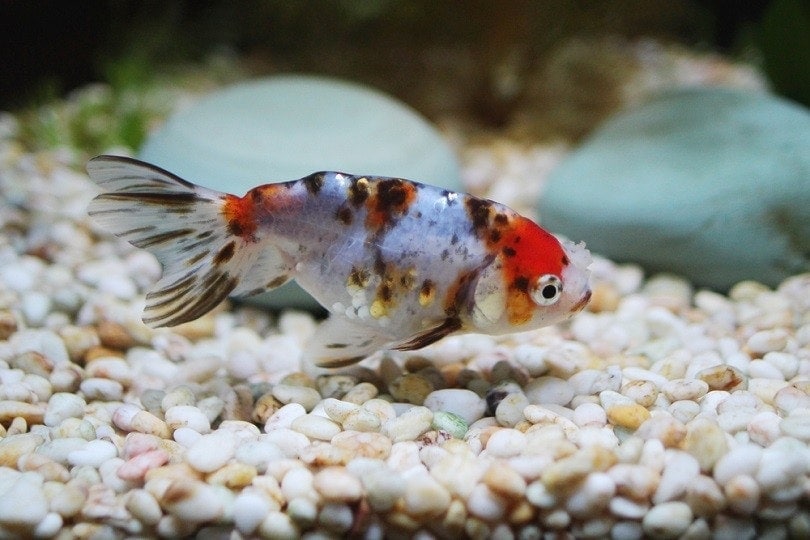
Care Guide & Tank Set Up
Water Quality, pH & Temperature
Eggfish are relatively hardy, but they do tend to be less hardy than other goldfish varieties. Because of their mobility limitations, these fish aren’t suitable for outdoor tanks or ponds.
In their tank indoors, they should be provided with excellent water quality to maintain their health. No ammonia or nitrites should be present, and nitrate levels at 20 ppm or less are ideal. Like other goldfish, the Eggfish prefers neutral water, so the ideal pH is around 7.0–7.5, but a pH level between 6.0 and 8.0 is tolerable.
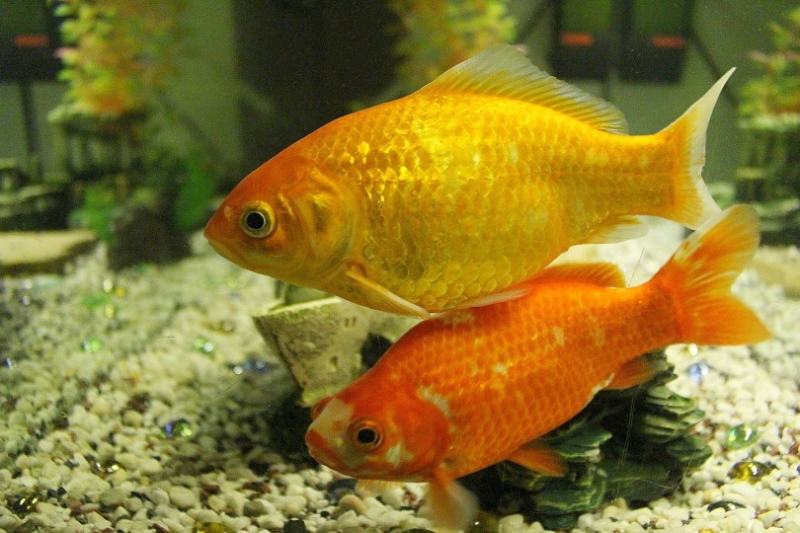
Substrate
Goldfish love to scavenge through the substrate in their tank in search of snacks, so you should provide a substrate that is soft and completely free of sharp edges. Since your goldfish is likely to pick up substrate, you should aim for a substrate that is too small to get stuck in the mouth or too large to fit in the mouth. Sand, planted tank substrate, aquatic soil, and smooth river rocks are all appropriate. Many people prefer to keep a bare-bottom tank for goldfish for ease of cleaning.
Plants
Goldfish can be hard on plants, often uprooting and eating them. This can make it difficult to find suitable plants. Plants that most goldfish don’t find tasty, like hornwort, are a good option, as well as floating plants, like water lettuce. Plants that can be securely attached to surfaces in the tank, like mosses and Java fern, can prevent your Eggfish from uprooting plants.
Lighting
The Eggfish only requires a routine day/night lighting cycle. A tank light is a good way to ensure your fish gets adequate and stable levels of light every day. Tank lighting is also necessary to support the growth of your aquarium plants, so ensure your light meets the needs of your plants.

Filtration
Goldfish are very messy fish that create a heavy bioload in their tank. Because of this, they require strong filtration to ensure high water quality is maintained. If you are keeping multiple goldfish in one tank, it’s ideal to over-filter the tank by using filtration for a tank larger than the one your fish are in. This can be achieved with one large filtration system, or you can combine multiple filtration options, like hang-on-back filters and canister filters.
Things to Know When Owning an Eggfish Goldfish:
Food & Diet Requirements
Eggfish are omnivores, so they should be provided with a balanced, varied diet to support their health and growth. High-quality fancy goldfish pellets are ideal, but you can also feed a high-quality food like Repashy gel food. Bloodworms, brine shrimp, and mosquito larvae make excellent treats for goldfish that also support protein intake. They also love a variety of fruits, vegetables, and herbs, including parsley, cilantro, romaine lettuce, spinach, zucchini, and banana.
Size & Growth Rate
As is common with fancy goldfish varieties, the Eggfish stays on the small side for a goldfish. You can expect your Eggfish to reach around 4–7 inches in length by the time they are fully grown. For comparison, slim-bodied goldfish can exceed 10–12 inches in length with proper care. High water quality and excellent nutrition will support rapid growth in your Eggfish.

Varieties
The Eggfish has an egg-shaped body and lacks a dorsal fin. It is similar in appearance and shape to the Ranchu goldfish, but the Eggfish doesn’t have the wen, or growth on the head, that is present on the Ranchu. They also may be longer than the average Ranchu.
There is a long-finned Eggfish variety known as the Phoenix, but it is very uncommon in the US. While Eggfish are most commonly seen in shades of orange or gold and white, they can also be spotted in red, black, and calico varieties.
Lifespan and Health Conditions
These fish have a surprising lifespan of up to 15 years. However, with all fish, you need to ensure they are in an ideal environment to avoid certain health conditions.
- Ich
- Parasites
- Dropsy
- Swim bladder dysfunction
Male vs Female
It can be difficult to spot the differences between male and female goldfish, regardless of breed. There are a couple of things that can help, though. Females do tend to have rounder bodies than males, giving them a more plump appearance. The vent, or anal opening, of the female has a slight outward protrusion, while the male’s is flatter to the body. During breeding season, male goldfish will develop breeding stars, which appear like small, white pieces of sand or sugar on their gills.
Final Thoughts
The Eggfish is a wonderful goldfish breed that is social and fun to keep. They are more sensitive than many other goldfish varieties, though, so it’s important to provide them with high-quality care to ensure their health. Goldfish tend to live shorter lives than necessary due to poor husbandry, but if you properly care for your Eggfish, then you’ll likely have a fish that is with you for upwards of 10 years. Feed a high-quality, varied diet to ensure the long-term health of your new Eggfish.
Featured Image Credit: seaonweb, Shutterstock



